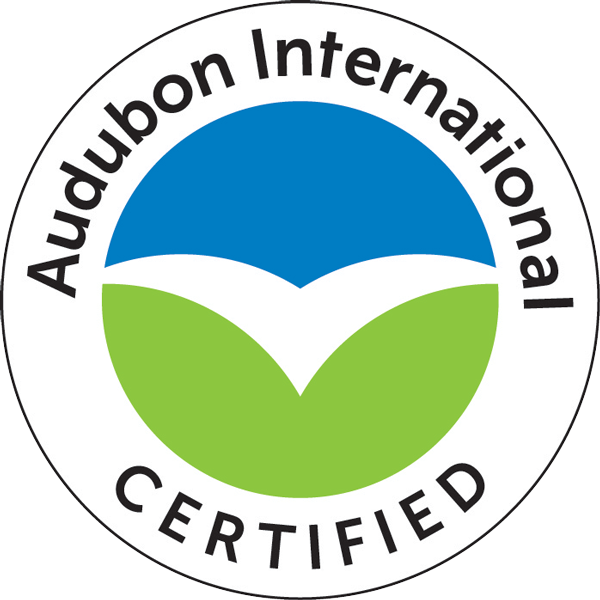
Shaping Green Fairways in the Desert
Pioneering Sustainable Golf Tourism in the Middle East and Africa
OHK specializes in spatial planning and design and strongly focuses on tourism. Recognizing the rapid growth of golf tourism and the increasing demand for environmentally sustainable golf courses in arid, water-scarce regions, OHK has developed environmental guidelines tailored to the Middle East and Africa. These guidelines aim to mitigate the negative impacts of developing golf courses in these regions while supporting the ongoing expansion of tourism.
The global golf tourism industry has experienced significant growth in recent years. According to the International Association of Golf Tour Operators, golf tourism has seen a consistent annual growth rate of 9.3% since 2012. This growth is attributed to an increase in the number of golf courses, the expansion of golf-related facilities, and a growing interest in the sport.
To capitalize on this trend, many countries are diversifying their tourism offerings to include golf courses and golf tourism packages. As a result, there is a growing demand for sustainable golf courses that can integrate seamlessly with the environment and local communities. The Middle East is one of the fastest-growing regions in tourism. It has emerged as a surprisingly emerging destination for golf tourism. Countries like Egypt, the United Arab Emirates, Saudi Arabia, and Qatar are investing heavily in golf courses and related infrastructure. With a focus on green development, these destinations integrate golf into their specialized tourism offerings and have become an integral part of significant master-planned developments.
As golf tourism grows in the Middle East and Africa, the organizations responsible for overseeing tourism development, including regulation and land allocation, golf course investors and private land developers, and planners and designers, face a challenge in managing the design and development of golf courses. These organizations need support in navigating the review and approval processes for such projects while considering the potential adverse environmental impacts.
OHK conducted sustainability audits of Somabay and ElGouna Golf Courses on the Red Sea. Somabay Golf (bottom photo) boasts a championship course designed by Gary Player and a 9-hole par-3 course and is part of a 1,100-hectare resort development that opened in 1998. ElGouna Golf (top photo), designed by Gene Bates and Fred Couples, opened in 1999 and is part of the largest privately developed resort town in the Middle East and Africa. These audits marked the first sustainability audits of golf courses in the region.
OHK developed the first and only set of environmental guidelines for golf course development in the Middle East and Africa, with a process that involved expert consultations with leading designers, sustainability audits of golf courses, and study tours to numerous golf designations and courses. Additionally, design workshops were conducted in collaboration with leading design offices worldwide.
Reviewing current best practices: We comprehensively reviewed the existing best practices in golf course development and management, analyzing global standards and approaches to environmental sustainability.
Forming an advisory team of disciplinary experts and designers: We assembled a diverse team of experts, including turf management specialists, environmentalists with experience in arid regions, water management professionals, and golf course designers, to develop the guidelines.
Conducting consultations and study tours to existing and developing golf courses in Africa and the Middle East: To gain a deeper understanding of the unique challenges facing golf course development in the Middle East and Africa, we conducted consultations and study tours with stakeholders, industry experts, and local communities across various destinations in the region. This included study tours and workshops in South Africa, Egypt, the UAE, and Arizona in the United States.
Audits of golf courses from the Middle East: These audits assessed various factors, including turf management, water management, energy efficiency, waste management, and wildlife conservation, among others.
Training program for 23 golf course superintendents and 8 golf courses in the Middle East: We developed a capacity-building program in association with North Carolina State University, a leader in golf course-related management and agricultural studies, to provide a comprehensive training program on golf course design, turf, and environmental management to help develop regional skills to effectively manage golf courses while prioritizing environmental sustainability.
Formulating the first-of-its-kind guidelines for this region: Based on the insights gathered through consultations, study tours, and expert input, we developed the first-of-its-kind environmental guidelines for sustainable golf course development in the Middle East and Africa, tailored to the unique challenges and environmental conditions of the region.
Applying the guidelines in a pilot project: We put them into practice by applying them to a large-scale golf course development project in South Sinai, serving as a regional pilot project. This enabled us to test and refine the guidelines while demonstrating their effectiveness in practice.
Promoting Green Certifications for Middle East Golf Courses: We collaborated with Audubon International and the USGA to establish a path for various regional golf courses to achieve green certification. We prepared rapid audit guidelines and recommendations for environmental engagement programs for existing and under-construction golf courses. Also, we organized a workshop with international golf designers active in the Middle East, the Audubon Society, and the USGA in Sharm El-Sheikh, Egypt, to introduce green labeling and discuss the technical design aspects and the path to green certification.
OHK collaborated with top golf course design, environmental management, and sustainability organizations, such as Audubon International, the United States Golf Association, and leading design firms, to create guidelines. This collaboration ensured the guidelines incorporated global best practices and expert knowledge, making them effective and relevant.
Having worked in the spatial and economic planning of large resort towns and greenfield developments with multiple projects in desert environments, OHK's environmental guidelines for sustainable golf course development in the Middle East and Africa are particularly timely and relevant. OHK has been a true pioneer in this field, addressing the unique challenges faced by these regions and collaborating with industry leaders to create a valuable resource for organizations seeking to develop golf courses that support tourism growth and environmental sustainability.
The guidelines developed by OHK have become a popular standard for sustainability audits in the Middle East and other regions where water resources are scarce. Conducting sustainability audits has become increasingly important for golf courses to ensure their development and maintenance are environmentally responsible. By undergoing these audits, golf courses can demonstrate their commitment to sustainability, meet the growing regulatory requirements from tour operators, and improve their reputation in conscious tourism source markets and among competing destinations.
Contact us to learn more about OHK’s tourism planning, sustainable development, and design work.
Learn more about the United States Golf Association's work in golf sustainability and Audubon International's efforts in promoting green golf courses.









